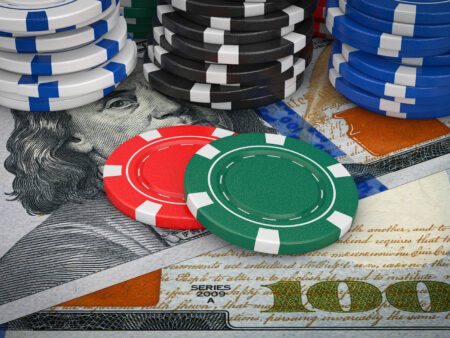Discover the fascinating world of poker psychology and how understanding player behavior can give you an edge. Learn to observe, identify tells, and control your emotions in this insightful article.
The Psychology of Poker: Understanding Player Behavior
Introduction:
When it comes to poker, it’s not just about the cards you hold. Understanding the psychology of your opponents and being able to interpret their behavior can give you a significant edge in the game. In this article, we will delve into the fascinating world of poker psychology and explore how player behavior can be an essential factor in your overall strategy.
The Importance of Observation:
One of the fundamental aspects of poker psychology is observation. To gain insights into your opponents, you need to pay attention to their actions, expressions, and body language throughout the game. By observing how they bet, react to certain cards, or even how they sit and hold their chips, you can start to decipher their playing style and make informed decisions.
Identifying Tells:
Tells are subtle cues that players unknowingly display, revealing their true intentions or the strength of their hand. These can be verbal, such as an increase in their breathing rate or the pitch of their voice, or non-verbal, such as facial expressions, hand movements, or even the direction they look in. By learning to recognize these tells, you can gain valuable information about the strength of your opponents’ hands and adjust your strategy accordingly.
Common Types of Tells:
While tells can vary from player to player, there are some common types that you should be aware of:
- Timing Tells: How long it takes for a player to make a decision can indicate the strength of their hand. A quick decision may suggest a weak hand, while a prolonged pause could signal a strong hand or a bluff.
- Physical Tells: Watch for changes in body language, such as fidgeting, leaning forward, or nervously tapping fingers. These can indicate nervousness or confidence, which can be valuable information.
- Betting Patterns: Pay attention to how your opponents bet. Do they consistently bet a certain amount when they have a strong hand? Do they make small, hesitant bets when bluffing? Patterns in betting behavior can help you determine the strength of their hands.
Mind Games and Deception:
Poker is as much a psychological battle as it is a card game. Skilled players use various tactics to deceive their opponents and gain an advantage. One common strategy is to purposely display false tells to confuse opponents and induce them to make mistakes. It’s important to be aware of these mind games and not let them sway your decisions. Stick to your observation-based strategy and trust the patterns and behaviors you have analyzed.
Emotional Control:
One of the most challenging aspects of poker psychology is managing your own emotions. It’s natural to feel frustration or excitement during a game, but allowing these emotions to dictate your decisions can lead to costly mistakes. Successful poker players maintain a calm and composed demeanor, regardless of whether they are winning or losing. By mastering emotional control, you can prevent your opponents from gaining an advantage by exploiting your emotional state.
Conclusion:
Understanding the psychology of poker and player behavior is a powerful tool that can elevate your game to new heights. By learning to observe, identify tells, and control your own emotions, you can make informed decisions and react effectively to the actions of your opponents. Remember, poker is not just about the cards – it’s about the players.










